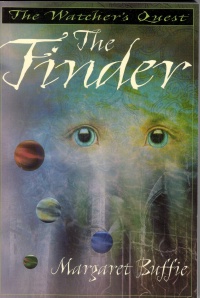| ________________
CM . . .
. Volume XI Number 8 . . . . December 10, 2004
excerpt: "Tom?" I ask. "Why do you think Moraan made this hedge maze to confine the Tetrad?" "Druvids use mazes for various reasons. Remember Fidchell, the board games you played with Fergus? Mathus created mazes in both of them." "Right. But why?" "There are many levels of...physical existence for Druvids. Imagine these levels as colored ribbons that loop around one another. Let's say that the ribbon of human reality is a red one. Most humans believe that the red ribbon is the only ribbon of life. "If one admits he sometimes sees a blue ribbon or a purple ribbon - something strange and magickal - the others say it's all in his imagination. A few may be a bit more open and decide it is something super natural - a mystery beyond logic." I nod. "Yeah. Most people only believe in the Real World." "But Druvids know that the ribbons move through one another and often join together - because they are part of the same reality. A maze represents all those ribbons of existence coming together." The Finder is the third book in "The Watcher's Quest" trilogy. In this complicated, cunning finale, Emma Sweeney is sent to spend a week with her human family on Argadnel, another world. Against direct orders, she enters a cave portal there and thus sets in motion another Game in which powerful druids battle for control of worlds. Emma's own family is held hostage as Emma searches for and finds four magic wands, ensuring her family's safety and the creation of some space where the deadly Games will not be played. Emma finds her biological father, is united again with her adoptive Earth family, and falls in love with Tom, her Watcher. Emma continues her Watcher-building lessons, on her way to becoming the most powerful Druid of all. Video game players will revel in this book's fast paced action, leaps into the unknown, character morphing and setting meltdowns. Heroes with "magickal" powers, characters described in infinite detail, and the excitement of competitive gaming will attract both boys and girls who long to be the honourable hero who succeeds in the face of almost insurmountable odds through gritty determination and dogged persistence, not to mention a little luck. Fairy tale elements (the four wands to gather, the advice of the wand keepers, the characters who are more than they seem and evil's active pursuit of goodness) are integral to this book's structure. A love story is interwoven through the book, too. Emma is initially a wilful, hot-headed, immature girl. Defying her teachers, she takes off into the unknown almost to spite them, deciding that she will no longer be a student Watcher. It is only through the help of her Watcher, Tom, and the advice of the Tetrad that Emma can complete the quest of finding the four wands. She struggles to decipher their messages and can do so only by calming her mind. Learning to focus and meditate helps Emma to solve the puzzle and to develop her own magic powers. Humility initially escapes her. It is only in the end, when Emma admits that she is playing a Game and not going on a quest, that she 'wins" the Game. There are many (countless) other characters each more weird and wonderful than the last. None change and develop the way Emma does, but rather they contribute extremely colourful background to Emma's adventures. Some are not what they seem. Most have an ulterior motive; as they help Emma, they are also solving their own problems. The intricate connections between these players of the Game are extremely complex. A thorough understanding of the Game and the worlds it is fought in would be difficult for the intended age group to grasp easily. This adult reviewer had to resort to charting the book out on paper just to keep the characters straight. The use of the present tense, although unsophisticated and sometimes irritating, does provide a strong sense of action in the immediate here and now that will appeal to younger readers developing a taste for fantasy. Fantasy elements such as mind reading, shape changing and shots of electrical-like power are slipped easily into the text, cleverly shown instead of told. The richly detailed descriptions of fantastic characters are breath taking and powerful. Its language is both formalized (the regents offer ritualistic advice, castles and forts are "fortalices," gnomes are "gnomuses") and direct, with urgent dialogue that hurries the heroes through their tasks one step ahead of Eefa, the arch demon. Strong themes of the necessity of discovering one's own identity and persisting in the face of danger and defeat dominate this novel. The powerful pull of family love, though, is ultimately the basis of Emma's success, as she completes her tasks to save her family and to discover who she really is. For those middle school readers willing to persist with its many complications and to puzzle solve as they read, The Finder will provide a satisfying and compelling story. Recommended. Joan Marshall is the teacher-librarian at Fort Richmond Collegiate in Winnipeg, MB.
To comment
on this title or this review, send mail to cm@umanitoba.ca.
Copyright © the Manitoba Library Association. Reproduction for personal
use is permitted only if this copyright notice is maintained. Any
other reproduction is prohibited without permission.
NEXT REVIEW |TABLE OF CONTENTS FOR THIS ISSUE
- December 10, 2004.
AUTHORS
| TITLES | MEDIA REVIEWS
| PROFILES
| BACK ISSUES
| SEARCH | CMARCHIVE
| HOME |
